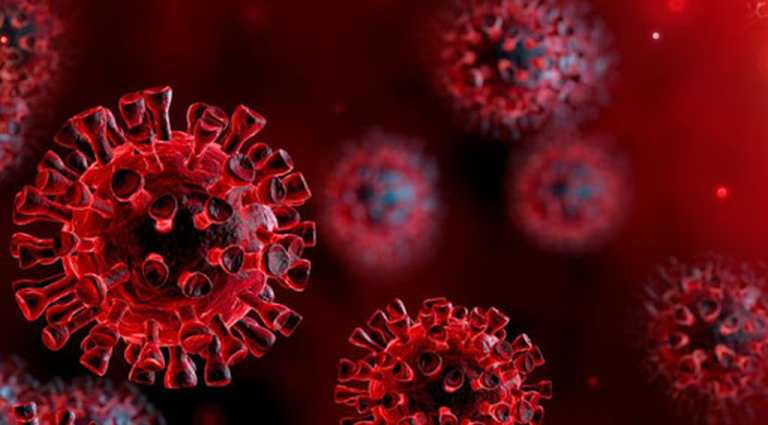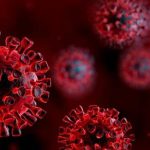New study finds people have short-lived immunity to seasonal coronaviruses

With coronavirus claiming over one million worldwide, there is a piece of discouraging news today from scientists. According to a new study published in the journal Nature Medicine, researchers found that immunity to other coronaviruses tends to be short-lived, with reinfections happening quite often about 12 months later and, in some cases, even sooner.
The researchers examined blood samples collected continuously from 10 healthy individuals since the 1980s for evidence of infections—and reinfections—with four common coronaviruses. Unfortunately, it’s not particularly encouraging news.
“A key metric in seeking to end the COVID-19 pandemic is the likely duration of acquired immunity, which is how long people infected with SARS-CoV-2, the novel coronavirus that causes COVID-19, are protected against reinfection. The hope is that acquired immunity from natural infection—or from vaccines—will be long-lasting, but data to confirm that’s indeed the case won’t be in for many months or years,”NIH Dr. Francis Collins explains.
In the meantime, a useful place to look for clues is in long-term data on reinfections with other seasonal coronaviruses. Could the behavior of less life-threatening members of the coronavirus family give us some insight into what to expect from SARS-CoV-2?
Prior to the discovery of SARS-CoV-2, six coronaviruses were known to infect humans. Four are responsible for relatively benign respiratory illnesses that regularly circulate to cause the condition we recognize as the common cold. The other two are more dangerous and, fortunately, less common: SARS-CoV-1, the virus responsible for outbreaks of Severe Acute Respiratory Syndrome (SARS), which ended in 2004; and MERS-CoV, the virus that causes the now rare Middle East Respiratory Syndrome (MERS).
In the new study, a team led by Lia van der Hoek, University of Amsterdam, the Netherlands, set out to get a handle on reinfections with the four common coronaviruses: HCoV-NL63, HCoV-229E, HCoV-OC43, and HCoV-HKU1. This task isn’t as straightforward as it might sound. That’s because, like SARS-CoV-2, infections with such viruses don’t always produce symptoms that are easily tracked. So, the researchers looked instead to blood samples from 10 healthy individuals enrolled for decades in the Amsterdam Cohort Studies on HIV-1 Infection and AIDS.
To detect coronavirus reinfections, they measured increases in antibodies to a particular portion of the nucleocapsid of each coronavirus. The nucleocapsid is a protein shell that encapsulates a coronavirus’ genetic material and serves as important target for antibodies. An increase in antibodies targeting the nucleocapsid indicated that a person was fighting a new infection with one of the four coronaviruses.
All told, the researchers examined a total of 513 blood samples collected at regular intervals—every 3 to 6 months. In those samples, the team’s analyses uncovered 3 to 17 coronavirus infections per study participant over more than 35 years. Reinfections occurred every 6 to 105 months. But reinfections happened most frequently about a year after a previous infection.
Not surprisingly, they also found that blood samples collected in the Netherlands during the summer months—June, July, August, and September—had the lowest rate of infections for all four seasonal coronaviruses, indicating a higher frequency of infections in winter in temperate countries. While it remains to be seen, it’s possible that SARS-CoV-2 ultimately may share the same seasonal pattern after the pandemic.
These findings show that annual reinfections are a common occurrence for all other common coronaviruses. That’s consistent with evidence that antibodies against SARS-CoV-2 decrease within two months of infection [2]. It also suggests that similar patterns of reinfection may emerge for SARS-CoV-2 in the coming months and years.
At least three caveats ought to be kept in mind when interpreting these data. First, the researchers tracked antibody levels but didn’t have access to information about the actual illness. It’s possible that a rise in antibodies to a particular coronavirus might have provided exactly the response needed to convert a significant respiratory illness to a mild case of the sniffles or no illness at all.
Second, sustained immunity to viruses will always be disrupted if the virus is undergoing mutational changes and presenting a new set of antigens to the host; the degree to which that might have contributed to reinfections is not known. And, third, the role of cell-based immunity in fighting off coronavirus infections is likely to be significant but wasn’t studied in this retrospective analysis.
To prepare for COVID-19 this winter, it’s essential to understand how likely a person who has recovered from the illness will be re-infected and potentially spread the virus to other people. While much more study is needed, the evidence suggests it will be prudent to proceed carefully and with caution when it comes to long-term immunity, whether achieved through naturally acquired infections or vaccination.
While we await a COVID-19 vaccine, the best way to protect yourself, your family, and your community is to take simple steps all of us can do today: maintain social distancing, wear a mask, avoid crowded indoor gatherings, and wash your hands.




